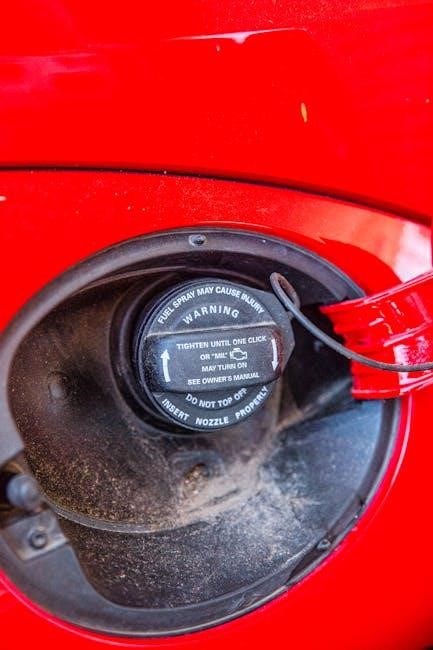Microneedling is a minimally invasive treatment using tiny needles to stimulate collagen production, improving skin texture and appearance․ Proper aftercare is crucial for optimal healing, minimizing complications, and achieving desired results․
Overview of Microneedling and Its Importance
Microneedling is a minimally invasive skin rejuvenation treatment that uses tiny needles to create micro-injuries, stimulating collagen production and promoting natural healing․ It improves skin texture, reduces signs of aging, and addresses concerns like scars and stretch marks․ The procedure is popular for its ability to enhance skin health without significant downtime․ Proper aftercare is essential to ensure optimal results, prevent complications, and support the skin’s recovery process․ By following guidelines, patients can maximize the benefits of microneedling and achieve a smoother, more radiant complexion․
Why Proper Aftercare is Essential for Optimal Results
Proper aftercare following microneedling is vital to ensure the skin heals effectively and achieves the best possible outcomes․ Without adequate care, the risk of complications like infection, prolonged redness, or scarring increases․ Adhering to a post-treatment routine helps maintain the integrity of the skin barrier, allowing it to recover efficiently․ This includes gentle cleansing, avoiding irritants, and protecting the skin from environmental stressors․ By prioritizing aftercare, patients can enhance the treatment’s effectiveness and enjoy smoother, healthier-looking skin long-term․

Immediate Post-Procedure Care
The first few hours after microneedling are crucial for healing․ The skin is sensitive, so gentle care is essential to prevent irritation and promote recovery effectively․
What to Expect in the First 24 Hours
After microneedling, your skin may appear red, sensitive, or tight, similar to a mild sunburn․ This is normal and typically subsides within 24-48 hours․ You may experience mild swelling, especially around the eyes․ Avoid touching or applying heavy products to the treated area․ Use a gentle cleanser and soothing serum as recommended․ Avoid makeup, sun exposure, or harsh skincare products during this period․ Be prepared for a “pins and needles” sensation that fades as the skin heals․ If redness or swelling worsens, contact your practitioner for guidance․
Redness and Swelling: Normal Symptoms and Management
Redness and swelling are common after microneedling, caused by the micro-injuries created during the procedure․ These symptoms are usually mild to moderate and temporary, resolving within 24-72 hours․ To manage redness, apply a cold compress or gentle, soothing products like hyaluronic acid serum․ Swelling can be reduced by elevating the head while sleeping․ Avoid makeup or harsh products, as they may worsen irritation․ If symptoms persist or worsen, consult your practitioner for guidance․ Patience is key, as the skin’s response is part of the healing process․
Keeping the Skin Clean and Avoiding Contaminants
Keeping the skin clean after microneedling is crucial to prevent infection and promote healing․ Gently rinse the treated area with sterile water or a saline solution 2-3 times daily․ Pat dry with a clean, non-abrasive towel․ Avoid touching the face or treated areas, as hands can transfer bacteria․ Makeup and skincare products should be avoided for at least 24-48 hours․ Use only products recommended by your practitioner to minimize the risk of contamination and ensure proper healing․ Proper hygiene practices are essential during the recovery phase․

Cleaning the Skin After Microneedling
Cleaning the skin after microneedling is vital to remove bacteria and debris․ Use a gentle cleanser, lukewarm water, and pat dry․ Avoid harsh scrubbing or exfoliants․
Gentle Cleansing Techniques to Promote Healing
After microneedling, gentle cleansing is crucial to promote healing and prevent irritation․ Use a mild, fragrance-free cleanser with lukewarm water․ Gently massage the skin with clean fingertips or a soft cloth, avoiding scrubbing or exfoliation․ Rinse thoroughly and pat dry with a clean towel․ Avoid using hot water, harsh products, or exfoliants, as these can irritate the skin․ Cleanse twice daily to maintain hygiene and support the skin’s recovery process․ Always wash your hands before touching your face to minimize the risk of contamination․
Recommended Cleansers for Post-Microneedling Skin
For post-microneedling care, use gentle, non-comedogenic cleansers free from harsh ingredients like alcohol or fragrances․ Cetaphil Gentle Skin Cleanser and Neutrogena Hydrating Facial Cleanser are excellent options due to their mild, non-irritating formulas․ Look for cleansers labeled “suitable for sensitive skin” to minimize irritation․ Avoid exfoliating or astringent products, as they can disrupt the healing process․ Always choose fragrance-free and hypoallergenic products to ensure compatibility with your skin during recovery․ Consult your practitioner for specific product recommendations tailored to your skin type․
Avoiding Harsh Products That Can Irritate the Skin
After microneedling, avoid using harsh products containing alcohol, exfoliants, or artificial fragrances, as they can irritate the skin and delay healing․ Products with alpha-hydroxy acids (AHAs), beta-hydroxy acids (BHAs), or retinoids should be avoided during the initial recovery period․ Avoid toners, astringents, or cleansers with Witch Hazel, as they can dry out and irritate the skin․ Always opt for fragrance-free, hypoallergenic products to minimize the risk of adverse reactions․

Hydration and Moisturizing
Hydration and moisturizing are essential after microneedling to support skin healing and maintain moisture levels․ Use gentle, hydrating products to soothe and protect the skin effectively․
The Role of Moisturizer in the Healing Process
Microneedling creates micro-injuries to stimulate collagen production, and moisturizer plays a crucial role in soothing and hydrating the skin during recovery․ It helps reduce irritation, prevents dryness, and supports the skin’s natural barrier repair process․ Moisturizing regularly ensures the skin remains hydrated, promoting a smoother and more even healing process․ Proper hydration also minimizes the risk of post-procedure complications, such as flakiness or tightness, and enhances the overall effectiveness of the treatment for better, long-lasting results․
Best Products to Use for Hydration Post-Treatment
Post-microneedling, opt for gentle, fragrance-free moisturizers rich in hyaluronic acid, ceramides, or niacinamide․ These ingredients soothe irritation, restore the skin barrier, and lock in moisture․ Products like Cetaphil Moisturizing Cream or Neutrogena Hydro Boost Water Gel are excellent choices due to their non-comedogenic and hypoallergenic properties․ Avoid products with alcohol, artificial fragrances, or exfoliants․ Apply a thin layer 2-3 times daily to maintain hydration and support the skin’s recovery process for optimal results․
Ingredients to Avoid in Moisturizers
When selecting moisturizers after microneedling, avoid ingredients like alcohol, artificial fragrances, and exfoliants such as alpha-hydroxy acids (AHAs) or beta-hydroxy acids (BHAs)․ These can irritate the sensitive skin, prolong healing, and cause discomfort․ Additionally, steer clear of synthetic dyes and comedogenic ingredients that may clog pores․ Opt for hypoallergenic, non-comedogenic, and fragrance-free products to minimize irritation and support the skin’s recovery process effectively․

Sun Protection
Sun protection is critical after microneedling as skin becomes highly sensitive to UV rays․ Without proper protection, skin may experience burns, hyperpigmentation, or delayed healing․ Use broad-spectrum sunscreen daily to shield your skin and promote optimal recovery․ Neglecting sun protection can lead to complications like dark spots and prolonged recovery times, undoing treatment benefits․
Importance of Sunscreen After Microneedling
Sunscreen is vital after microneedling to protect sensitive skin from UV damage․ Microneedling creates micro-injuries, making skin more susceptible to sunburn, hyperpigmentation, and delayed healing․ Without proper protection, UV rays can cause complications like dark spots or prolonged redness․ Using sunscreen helps maintain treatment results and supports the healing process․ It’s essential to apply sunscreen daily, even on cloudy days, to ensure optimal skin recovery and prevent long-term damage․ This step is crucial for achieving the desired outcomes and maintaining healthy, glowing skin post-treatment․
Recommended Sunscreen Options for Sensitive Skin
For post-microneedling care, choose sunscreens with gentle, non-irritating ingredients․ Zinc oxide and titanium dioxide are excellent for sensitive skin due to their mineral, physical sunblock properties․ Look for fragrance-free, hypoallergenic options like La Roche-Posay Toleriane Ultra Fluid or EltaMD UV Clear Broad-Spectrum SPF 46․ Cetaphil Dermacontrol Moisturizing Sunscreen SPF 50 is another great choice․ Avoid sunscreens with harsh chemicals or exfoliants, as they can irritate freshly treated skin․ Opt for a broad-spectrum SPF 30 or higher to ensure proper protection․
How to Reapply Sunscreen Correctly
Reapply sunscreen every 2 hours or immediately after sweating or swimming․ Use a gentle, patting motion to avoid irritating the skin․ Apply a thin, even layer, ensuring full coverage․ For sensitive skin, opt for mineral-based sunscreens like EltaMD UV Clear or La Roche-Posay Anthelios Melt-In Sunscreen Milk․ Avoid rubbing or massaging the skin during application․ Consistency is key to protecting your skin and ensuring optimal recovery results after microneedling․

Lifestyle Adjustments
Modify daily habits to support healing and minimize complications․ Adjustments include avoiding strenuous activities, maintaining a balanced diet, and staying hydrated to promote skin recovery and overall health․
Activities to Avoid During the Recovery Period
Avoid strenuous exercise, sweating, and excessive sun exposure for 24-48 hours post-treatment․ Refrain from using saunas, steam rooms, or hot tubs․ Avoid touching or picking at the skin, as this can lead to infection or prolonged healing․ Skip makeup and harsh skincare products until the skin has fully healed․ Limit alcohol consumption and smoking, as they can impede recovery and reduce results․ By avoiding these activities, you minimize risks and support your skin’s natural healing process for optimal outcomes․
Dietary Recommendations for Skin Healing
To support skin healing after microneedling, focus on a nutrient-rich diet․ Incorporate foods high in vitamin C, such as citrus fruits and berries, to boost collagen production․ Leafy greens like spinach and kale provide antioxidants and essential minerals․ Omega-3 fatty acids from fish and nuts reduce inflammation․ Stay hydrated with water and herbal teas․ Avoid sugary and processed foods that can cause inflammation․ Limit caffeine and alcohol, as they can dehydrate the skin․ A balanced diet enhances recovery and promotes healthier, glowing skin post-treatment․
Hydration and Its Impact on Skin Recovery
Proper hydration is crucial for skin recovery after microneedling․ Drinking enough water helps maintain skin cell hydration and supports collagen production․ Aim for at least 8 glasses daily․ Incorporate water-rich foods like cucumbers and watermelon․ Monitor urine color; pale yellow indicates good hydration․ Avoid alcohol and caffeine, which dehydrate․ Staying hydrated not only accelerates healing but also improves skin elasticity and texture, leading to better treatment outcomes․

Common Mistakes to Avoid
Avoid over-exfoliating, using harsh products, and touching the skin post-treatment․ Neglecting sunscreen and ignoring aftercare instructions can delay healing and reduce results․ Stay disciplined for best outcomes․
Over-Exfoliation and Its Consequences
Over-exfoliating after microneedling can disrupt the skin’s healing process, leading to irritation, prolonged redness, and even infection․ Avoid using exfoliating brushes, acids, or scrubs during recovery, as this can strip the skin of its natural barrier․ Exfoliation should only resume once the skin has fully healed, typically after 7-10 days․ Premature exfoliation can undo the benefits of the treatment and delay results, making it essential to prioritize gentle care and patience․
Using Non-Recommended Products
Using non-recommended products after microneedling can irritate the skin, leading to dryness, redness, or even infection․ Avoid products containing harsh ingredients like retinol, glycolic acid, or fragrances, as they can disrupt the healing process․ Stick to gentle, fragrance-free cleansers and moisturizers specifically designed for post-treatment care․ Always follow your practitioner’s recommendations to ensure safe and effective healing․ Using unauthorized products can prolong recovery and reduce the effectiveness of the microneedling treatment, making it crucial to adhere to professional guidance․
Touching or Picking at the Skin
Touching or picking at the skin after microneedling can introduce bacteria, leading to infections or prolonged healing․ Your skin is highly sensitive and needs time to recover without interference․ Picking at the micro-injuries caused by the needles can create microtears, delaying the healing process and potentially causing scarring․ It’s essential to resist the urge to touch or pick, as this can undo the benefits of the treatment․ Keeping hands away ensures a smoother, safer recovery and optimal results from the procedure․

Healing Stages
Microneedling recovery involves distinct phases, starting with immediate healing, followed by skin renewal, and ending with long-term collagen production․ Proper aftercare accelerates this process, ensuring smooth, healthy skin over time․
Day 1-3: Immediate Healing Phase
During the first 72 hours, the skin experiences redness, swelling, and sensitivity․ Gentle cleansing with saline solution or a fragrance-free cleanser is essential․ Avoid makeup, harsh products, and direct sun exposure․ Hydration is key; apply a hyaluronic acid serum to soothe and moisturize․ Skin may feel tight or warm, similar to mild sunburn․ Refrain from exfoliating or using active ingredients․ Protect with a broad-spectrum sunscreen (SPF 30+) when going outside․ Follow your practitioner’s specific instructions to minimize irritation and support the healing process during this critical phase․
Day 4-7: Skin Renewal Phase
By days 4-7, redness typically subsides, and skin texture begins to improve․ Mild dryness or flakiness may occur as the skin renews itself․ Continue using a gentle moisturizer to support healing․ Avoid exfoliating, even if flakiness appears, as this can disrupt the process․ Sunscreen remains crucial, and makeup can be reintroduced if mineral-based․ Skin may feel tighter and look brighter․ Stick to your aftercare routine to ensure optimal results․ Avoid irritants like alcohol-based products to allow the skin to fully regenerate during this phase․
Day 7+: Long-Term Healing and Results
After day 7, most patients notice significant improvement in skin texture and tone․ Collagen production continues to enhance skin firmness and reduce fine lines․ Full results may take 4-6 weeks as the skin fully regenerates․ Maintain a consistent skincare routine, avoiding harsh products․ Sunscreen and moisturizer remain essential to protect and hydrate the skin․ Avoid over-exfoliating to prevent irritation․ Results are long-lasting, but proper aftercare ensures the best outcome․ Be patient, as final improvements may unfold gradually․ Stick to your practitioner’s advice for sustained benefits․

When to Seek Medical Attention
Seek medical attention if you experience severe symptoms like increased redness, swelling, pus, or unusual pain post-microneedling․ Persistent discomfort or signs of infection, such as fever, warrant immediate care․

Signs of Infection or Complications
Monitor for signs of infection, such as increased redness, swelling, or pus around the treatment area․ Other indicators include severe pain, warm skin, or blistering․ If you experience fever, chills, or spreading redness, seek immediate medical attention․ These symptoms may signal complications requiring professional care․ Prompt intervention is crucial to prevent serious issues and ensure proper healing․ Contact your practitioner if you notice any unusual or worsening symptoms post-microneedling․
Unusual Symptoms to Watch For
After microneedling, be vigilant for unusual symptoms such as abnormal itching, rashes, or peeling beyond the expected healing process․ If you notice dark spots, uneven skin texture, or persistent dryness that doesn’t improve, it may indicate an underlying issue․ Additionally, if you experience sensitivity to products that previously caused no irritation, this could signal a reaction․ Contact your practitioner promptly if these symptoms arise, as they may require adjustments to your aftercare routine to ensure proper recovery and desired results․
How to Contact Your Practitioner
If you experience concerns or unusual symptoms after microneedling, contact your practitioner promptly․ Most practices provide a direct phone number or email for post-treatment inquiries․ Clearly describe your symptoms, such as increased redness, itching, or discharge, to help them assess the situation․ For severe reactions, seek immediate medical attention․ Remember to follow any specific communication guidelines your practitioner provided during your consultation to ensure timely assistance and maintain the best recovery outcomes․
Proper microneedling aftercare is crucial for achieving desired results․ Follow guidelines to ensure healing, minimize risks, and maintain skin health․ Contact your practitioner with concerns․
- Keep the skin clean with gentle cleansers to prevent infection․
- Apply recommended moisturizers to promote healing and hydration․
- Avoid harsh products, exfoliation, and makeup for at least 24-48 hours․
- Stay hydrated to support skin recovery and overall health․
- Use sunscreen daily to protect sensitive skin from UV damage․
- Avoid strenuous activities that cause sweating or irritation․
- Follow all practitioner instructions for optimal results․
Final Thoughts on Achieving the Best Results
Consistency and patience are key to maximizing microneedling benefits․ By adhering to a proper aftercare routine, you can minimize downtime and enhance outcomes․ Avoid common pitfalls like over-exfoliation or using non-recommended products, as these can delay healing․ Stay hydrated, protect your skin from the sun, and maintain a gentle skincare regimen․ Remember, everyone’s healing process is unique, so trust the journey and follow your practitioner’s guidance․ With dedication, you’ll achieve healthier, glowing skin that reflects your investment in self-care․
